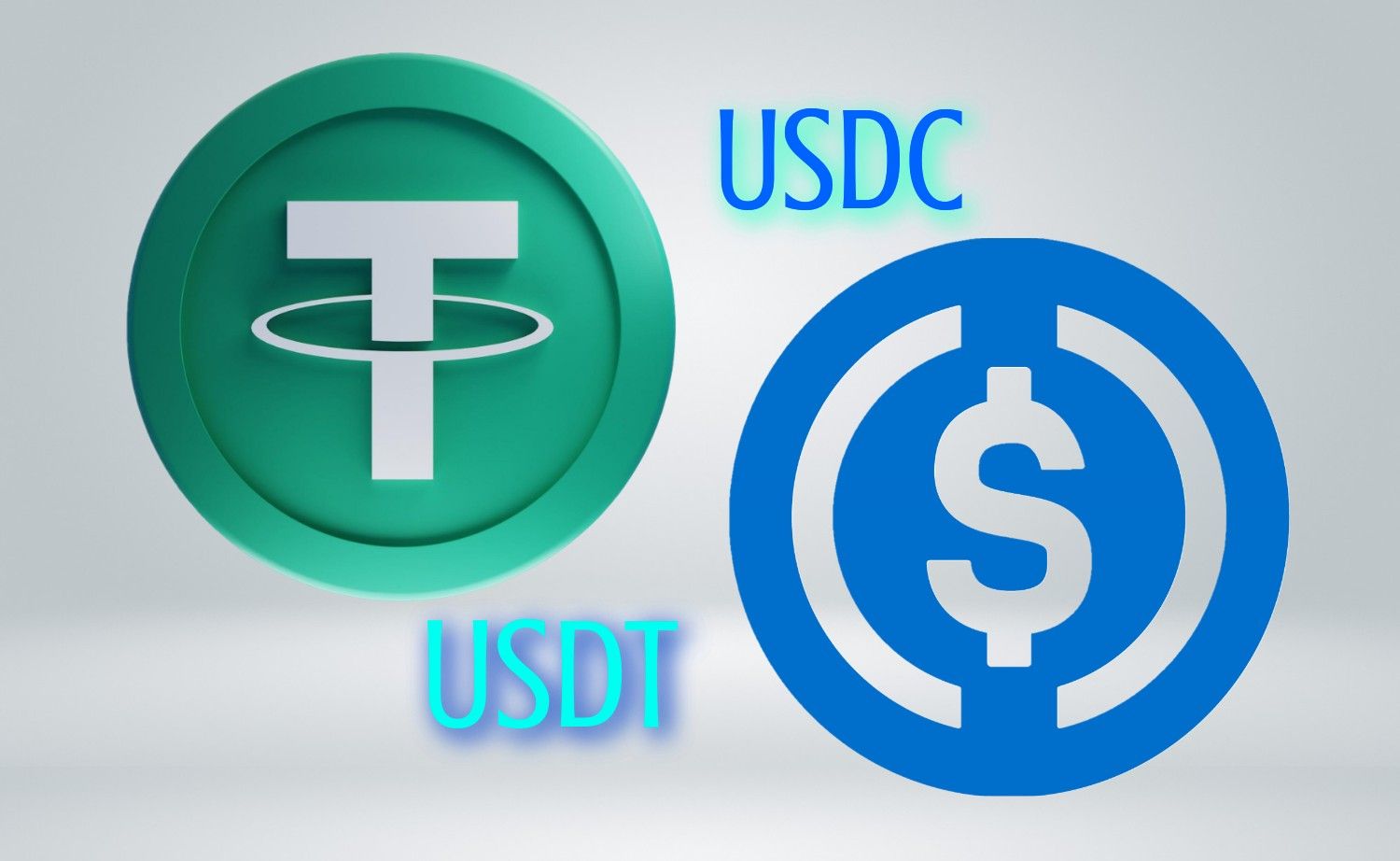Which Stablecoin Is Better: USDT or USDC?
because it permits transfers on a higher number of blockchains, traders may find it more appealing to use USDT rather than USDC. However, USDC is frequently considered a safe and trustworthy stablecoin since the Centre Consortium adheres to regulations and is completely transparently backed by cash

A stablecoin is a cryptocurrency pegged to another currency's value (like the US dollar) to make its value more stable and predictable. The two most prominent stablecoins are Tether (USDT) and USD Coin (USDC).
Both are anchored to the US dollar but have different approaches regarding keeping their prices stable over time, which could have big implications for your crypto portfolio. Here's everything you need to know about USDC vs. USDT so you can choose which one is best for you.
Overview
Volatility occurs for every crypto asset imaginable. As a result, the assets may enjoy soaring price increases and suffer overnight price drops. Stablecoins have developed as a solid alternative for investors to remain in the crypto ecosystem at a considerably reduced risk to offset these price oscillations. Stablecoins, which are pegged to a real-world asset—usually a fiat currency—provide resilience to the oscillations that other coins are prone to.
USD Coin (USDC) and Tether (USDT), both tied to the US dollar, have emerged as the dominant stablecoins, constantly dominating the market and appearing in virtually every major cryptocurrency exchange, wallet, and application.
The Tether's USDT is regarded as the first stablecoin, with USDT standing for the Tether's USD stablecoin symbol. It ranks fourth overall in terms of market capitalization. Once issued, USDT may be transferred, spent, and exchanged in the same way that any other cryptocurrency can. Its value is inextricably linked to the value of the matching fiat currency in reserve.
Unlike USDT, which only Tether can issue, USDC can be issued and redeemed by other CENTRE Network member institutions. USDC commercial issuers must comply with licensing, compliance, accounting, and technological and operational standards. In addition, to guarantee that USDC always has one-to-one backing, issuers must back all tokens with fiat reserves and provide monthly verification of reserves.
Both stablecoins reduce price volatility, offering a benefit distinct from typical cryptocurrency ownership. They are price-stable assets that behave like cash while retaining cryptocurrency functionality and mobility, making them an excellent hedge against the turbulent crypto market.
Comparing USDT vs USDC
Market Capitalization
Presently, the market capitalization for USDC stands at about $52bn, and that of USDT is in the region of $67bn.
As a result of recent uncertainty in the crypto market, the USDT's market cap has dropped significantly from its all-time high of $83 billion to $67 billion. USDC, on the other hand, has maintained its market capitalization of roughly $52 billion. Also, the USDC has a circulating supply of more than 52 billion tokens, while the USDT has a supply of more than 67 billion tokens.
In addition, USDC has now surpassed USDT for transactions on Ethereum. However, it may be too soon to judge the overall picture. This is because Tether's USDT continues to draw a large trading volume, another important factor to consider when rating cryptocurrencies. Furthermore, USDC's 24-hour volume is $9.90 billion compared to USDT’s $78 billion, making it the most traded crypto token in the market, even more than BTC.
Regulations, Transparency, and Security
USDC was developed to give the crypto industry a stablecoin backed by US dollars, similar to USDT, but with more transparent backing. At the time, because Tether's reserves had never been audited, stablecoin users were skeptical that USDT was completely collateralized.
In other words, Tether has been less than forthcoming about its financial situation, and Circle decided that the market needed a stablecoin that investors could rely on. USDC was likewise created to be utilized by both corporations and ordinary people. In addition, because USDC offers an open-source smart contract, other firms may create their blockchain solutions, such as wallets and exchanges.
Since the asset's establishment, USDC's reserves have been audited annually by professional accounting firms, and the audits have been filed with the SEC. USDC also passes through monthly attestations, or stress tests, in which accounting firms certify the correctness of Circle's financial records on USDC.
Tether does not reveal the assets it uses to back up USDT. Tether has never been audited nor revealed the identities of the institutions holding its reserves. Although it demonstrated at the end of 2021 that around 44% of its reserves were in US Treasury Bills, with the remainder identified as assets of unspecified commercial paper or short-term debt issued by corporations.
Conclusion
USDT is a handy currency for trade and payments. Traders may safeguard their holdings while remaining in the crypto market by switching between crypto-assets and fiat currency. Although USDC is also traded, USDT has a larger trading volume and liquidity, allowing for more transfers between crypto-assets and the stablecoin. In addition, because USDT permit transfers on a higher number of blockchains, traders may find it more appealing to use USDT rather than USDC, depending on the trading pair.
USDC is frequently considered a safe and trustworthy stablecoin since the Centre Consortium adheres to regulations and is completely transparently backed by cash. In contrast, there is still a considerable mystery about how USDT is supported, which has prompted some skepticism against it.
In essence, USDC and USDT may be extensively traded and invested on exchanges. Because they are supported on various blockchains, the stablecoin you select will be determined by the crypto asset you wish to purchase via accessible trading pairings.
For more beginner tips, as well as detailed guides on cryptocurrency and blockchain technology, do well to visit the Cwallet Blog and follow our social media communities: